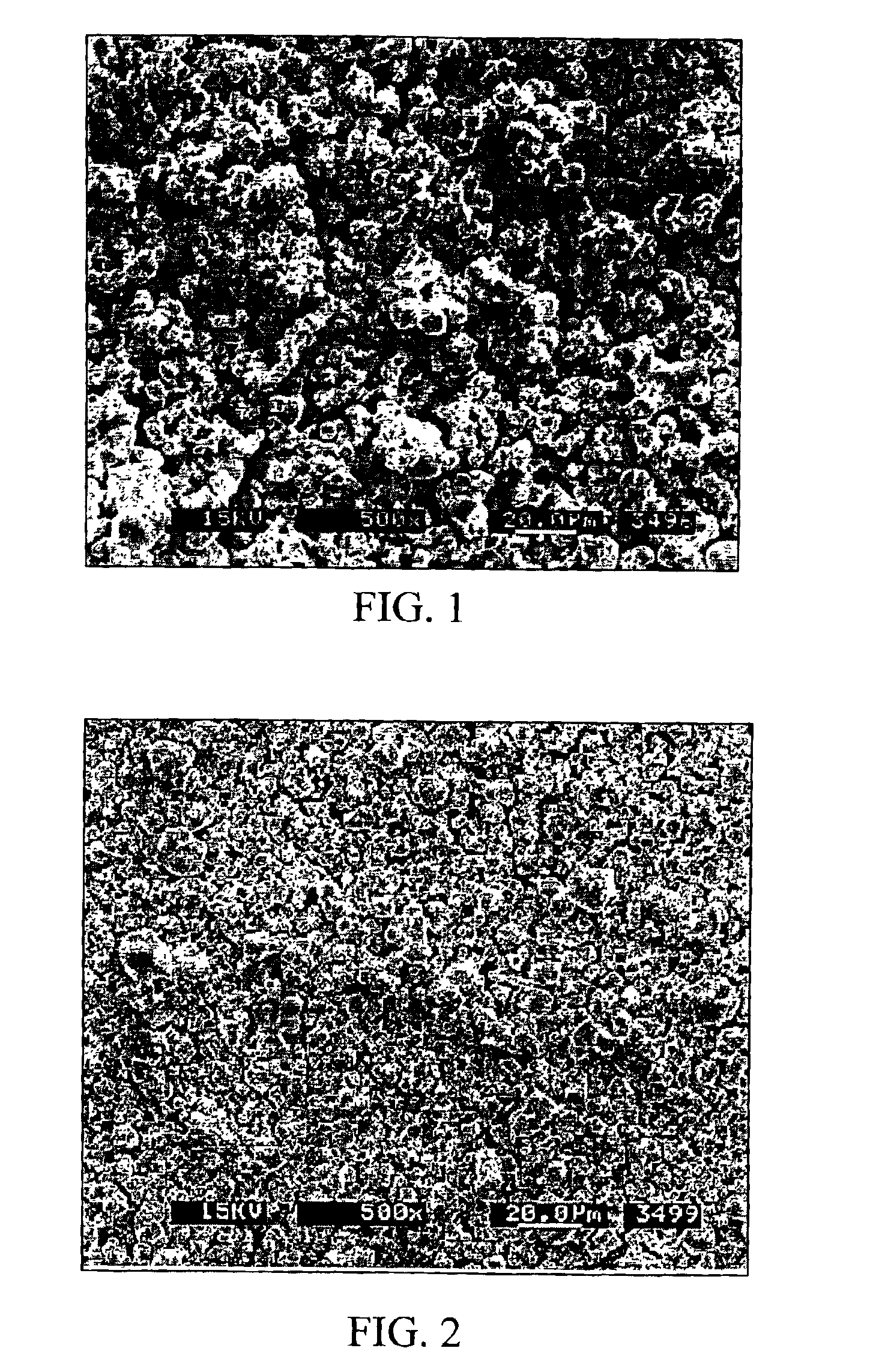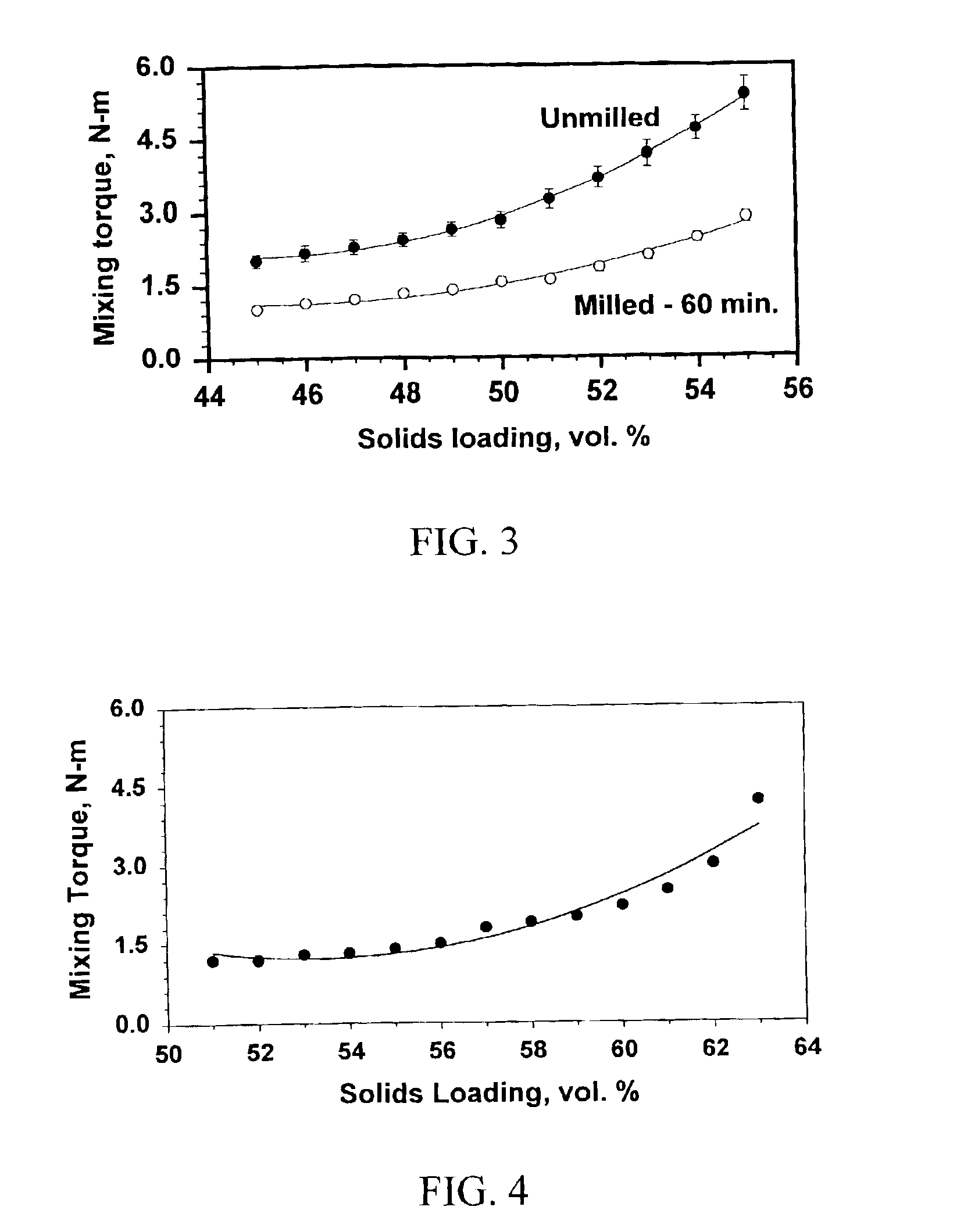Tungsten/powdered metal/polymer high density non-toxic composites
a composite material, high density technology, applied in the direction of ammunition projectiles, transportation and packaging, weapons, etc., can solve the problems of lead ingestion on humans, wildlife in general, and significant environmental pollution, and achieve the effect of high packing density
- Summary
- Abstract
- Description
- Claims
- Application Information
AI Technical Summary
Benefits of technology
Problems solved by technology
Method used
Image
Examples
example 1
Tungsten-Stainless Steel-Polymer (1)
[0089]A mixture of 17-4 PH stainless steel powder and milled tungsten powder was formulated with organic binders as shown in Table 1. The formulation was achieved by mixing the ingredients in a Sigma™ blade mixer at 220° C. and extruding the mixture out of a cylindrical die. The density of the mixture was 11.03 g / cc. An electron micrograph of the fracture surface of the resulting composite is shown in FIG. 10. FIG. 8 is an electron micrograph of 17-4PH stainless steel having the following particle size distribution: D10=3.2 μm; D50=6.9 μm; and D90=11.8 μm. FIG. 9 is an electron micrograph of milled tungsten powder. The milled tungsten powder of FIG. 9 has an apparent density of 7.8 g / cc, a Tap density of 10.0 g / cc, a density determined by pycnometer of 19.173 g / cc and the following particle size distribution: D10=5.65μm; D50=10.961 μm; and D90=18.5 μm. Composition of the stainless steel powder (17-4 PH), from Osprey Metals Ltd, is shown in Table 1...
example 2
Tungsten-Stainless Steel-Polymer (2)
[0092]A mixture of 17-4 PH stainless steel powder, (FIG. 8), and milled tungsten powder (FIG. 9) was formulated with organic binder in proportions as in Table 2. Composition of the stainless steel powder (17-4PH), from Osprey Metals Ltd, is shown in Table 1B above. Formulation was achieved by initially mixing the ingredients in a Readco™ continuous compounder between 40-70° C. and injection moulding the compounded material at 230° C. with a mould temperature of 100° C. The injection speed was 200 ccm / s. The solids loading was 59 vol % and the density of the formulation was 11.34 g / cc.
[0093]
TABLE 2Amount inFractional wt.compositeDensityMetal Powdersof powder(% by wt.)(g / cc)Mass (g)17-4 PH stainless steel0.0252.417.75819.34tungsten0.97593.9019.231954.16Amount inFractional wt.compositeDensityBinderof binder(% by wt.)(g / cc)Mass (g)Elvax ™ 4500.050.180.9562.74Pebax ™ 72330.883.251.021104.28Acrawax ™ C0.010.041.112.55Kynar ™ 28500.010.041.7512.55Fusabon...
example 3
Tungsten-Stainless Steel-Polymer (3)
[0094]A mixture of 17-4 PH stainless steel powder, (FIG. 8), and milled tungsten powder (FIG. 9) was formulated with organic binder in proportions as shown in Table 3. Composition of the stainless steel powder (17-4PH), from Osprey Metals Ltd, is shown in Table 1B. Formulation was achieved by initially mixing the ingredients in a Readco™ continuous compounder between 40-70° C. and injection moulding the compounded material at 230° C. with a mould temperature of 100° C. The injection speed was 200 ccm / s. The solids loading was 59 vol % and the density of the formulation was 11.35 g / cc. The hardness (Hv) was found to be 23.1±1.5. Deformation characteristics (relative malleability) of this product were analysed by a fully calibrated falling weight test. (The falling weight test involved dropping a 847 gram weight from a height of 33 mm above the upper surface of a substantially spherical sample (3.5 mm nominal diameter) and measuring a change in thic...
PUM
| Property | Measurement | Unit |
|---|---|---|
| Length | aaaaa | aaaaa |
| Length | aaaaa | aaaaa |
| Length | aaaaa | aaaaa |
Abstract
Description
Claims
Application Information
 Login to View More
Login to View More - R&D
- Intellectual Property
- Life Sciences
- Materials
- Tech Scout
- Unparalleled Data Quality
- Higher Quality Content
- 60% Fewer Hallucinations
Browse by: Latest US Patents, China's latest patents, Technical Efficacy Thesaurus, Application Domain, Technology Topic, Popular Technical Reports.
© 2025 PatSnap. All rights reserved.Legal|Privacy policy|Modern Slavery Act Transparency Statement|Sitemap|About US| Contact US: help@patsnap.com



